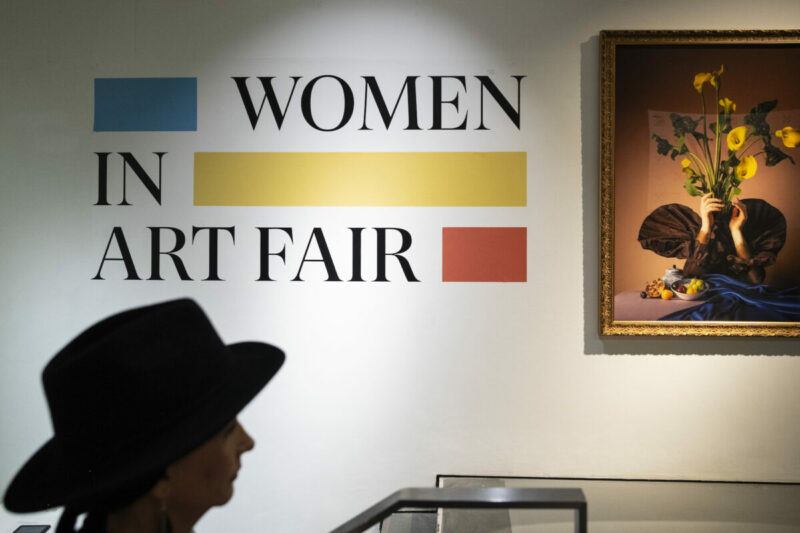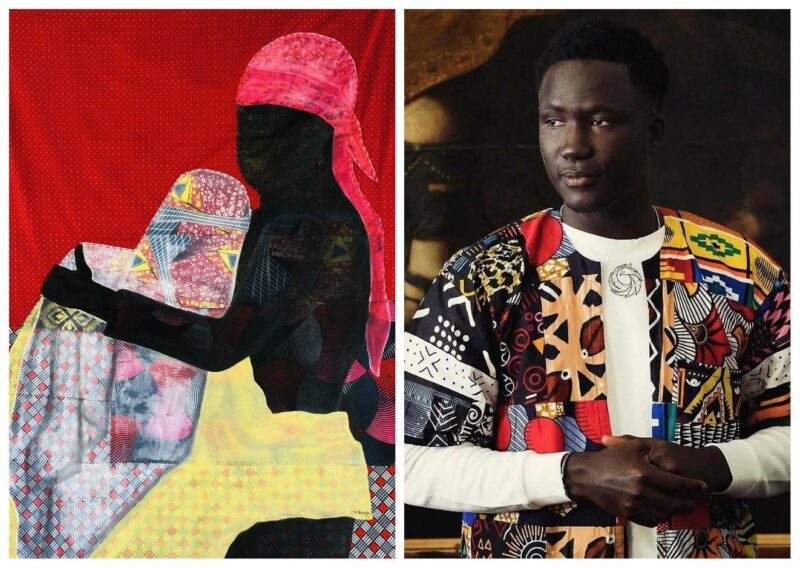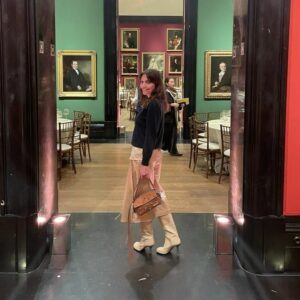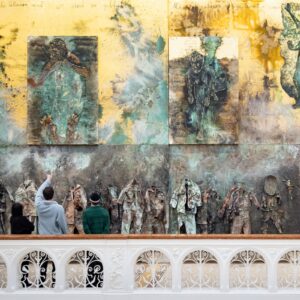Today we hear from Sara Piccinini, the senior coordinator of Collezione Maramotti. She reflects on the present (and future) of the Collection amidst these particular times, as well as talking about all the different projects the public collection has put in place to support its artists.
Collezione Maramotti is a public collection of contemporary art, founded over thirty years ago by Achille Maramotti. He conceived of this to create an exemplary institution, open to connoisseurs and curious individuals, in the service of the aesthetic and intellectual appreciation of art. He intended this collection to mirror the evolution of the most advanced artistic thinking of his time. The collection always reflected its founder’s desire to explore and catalyse the intellectual and physical interchange between diverse disciplines. The collection started off inside the Max Mara building in Reggio Emilia’s via Fratelli Cervi, geared to the creation of fashion collections. The building now houses the art collection permanently, highlighting the ongoing interchange between artistic creativity and industrial design, between the evolving languages of fashion and art.
At present, the Collection consists of several hundred works of art that date from 1945 to the present. More than two hundred are on permanent view, testifying to some of the most relevant artistic tendencies, both Italian and international, of the last fifty years. The artists are represented by works from early on in their careers, which exemplify important and groundbreaking strategies in contemporary art. The Collection begins with a number of important European paintings that embody the abstract-expressionist climate of the late 1940s and early 1950s ? art informel, more precisely. Also featured is a group of proto-conceptual Italian works, followed by an important selection of the works of the “Roman School” of Pop Art, and examples of Arte Povera works. A whole area is dedicated to the Italian neo-expressionism, known as the Transavanguardia, accompanied by works from the related movements in Germany and the United States. Next we find works of the New Geometry of the United States (1980s – 1990s), followed by the most recent experimentations in both the United States and Great Britain. Most of the Collection’s twenty-first century works have not been included in the permanent exhibition, and are presented in theme-based shows. The Collection is itself a “work in progress” and continues to explore the history of contemporary art as it unfolds.

Collezione Maramotti, Ingresso lato Nord / North entrance. Ph. C. Claudia Marini
1.Art organisations and individuals are launching many online initiatives to stay creative. Have you taken part in any, or organised any?
At Collezione Maramotti we are aiming to stay connected with our followers and art lovers through some new and stronger online initiatives which reflect our transparent communication identity, with artists at the centre of things. For example, we introduced the #paroledartista (artist’s words) section on our YouTube channel and social media — short videos which give a significant insight into the thoughts of “historical” (Zorio, Licini…) and more contemporary artists (Cammock, Pediconi…) whose works are included in our collection.
In collaboration with I Teatri of Reggio Emilia and various dance companies, we have also started publishing the full videos of the site specific dance performances we have been hosting in our galleries since 2009. These air every Sunday evening on our YouTube. The Trisha Brown Dance Company and Saburo Teshigawara are already available.
We’re also working with Aterballetto, a great international dance company based in Reggio Emilia, collaborating for an original “video-production at a distance” which will be broadcast on RAI 5 later in June.
2.Can you talk about your future projects as a Collection and point of reference for many artists?
Our exhibition programme is naturally going through a change as we monitor the situation on an ongoing basis. Our original plans have slipped but we do have a clearer picture for the 2020-2021 program. We’re very much looking forward to opening to the public our latest show “Two Thoughts” by Svenja Deininger. It’s ready and stunning but nobody has actually seen it yet! It was supposed to open on March 8, right at the very beginning of the quarantine. The show presents a new series of artworks on which Svenja has been working for almost one year, having in mind a dialogue on painting with Wladyslaw Strzeminski, an artist from the Polish avant-garde whose four beautiful Architectural Compositions from the 1920s are being exhibited parallel to Svenja’s work, on loan from the Muzeum Sztuki in Lódz. Then we’ll present the exhibition “Mollino/Insides” in the fall, with new paintings by Enoc Perez and photographs by Brigitte Schindler and Carlo Mollino. This will begin with glimpses of Mollino’s last, mysterious residence in Via Napione, Turin – now a museum – as transformed by Perez’s brush and Schindler’s lens, and end with Mollino’s own photographs of models, which blur into the enigmatic essence of the imaginary they inhabit. It was supposed to be our show in conjunction with the Fotografia Europea festival in April, but the festival has been suspended. Ruby Amanze’s show, which was planned for the fall, will be postponed to next year. We’ll keep working on our projects, mainly inviting young and emerging artists to produce new, challenging works for our galleries, but of course the health crisis forced us to reorganise everything.
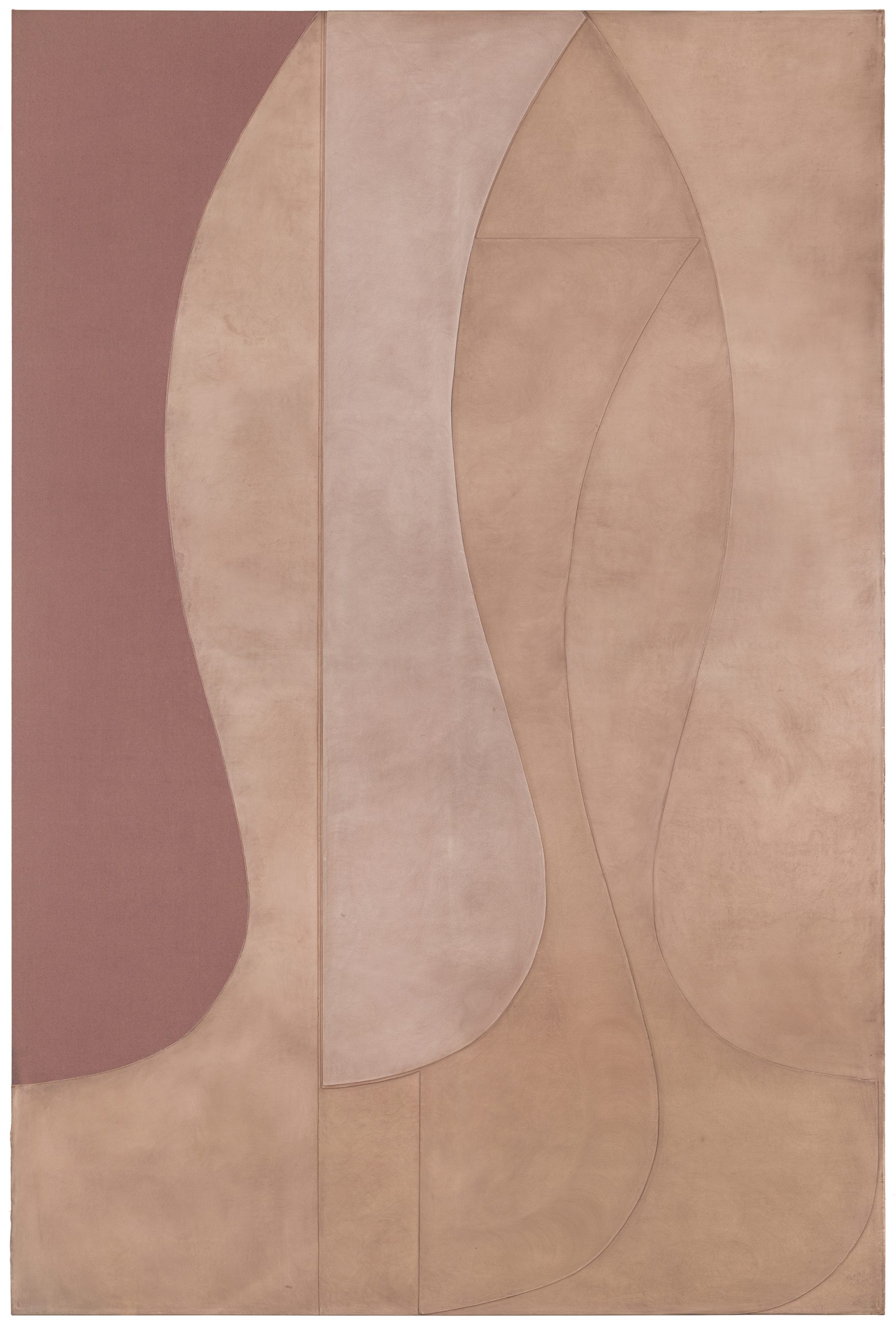
Svenja Deininger, ‘Untitled’, 2018, olio su lino / oil on linen, 269,5 x 180 cm. © the artist, Courtesy Marianne Boesky Gallery, New York/Aspen. Ph. Markus Wörgötter
3. How have you adapted to this unprecedented situation? What are you trying to do to stay relevant?
In addition to the new initiatives expressed above, we have been keeping our social media profiles very active and lively, giving updates and insights about our past and current exhibitions and projects. For example, we created some in-depth focuses on the materials of our library and archive, rich in rare artist’s books and documents. Additionally we published the video of the most recent exhibition, “Two Thoughts” by Svenja Deininger in order to present almost a virtual tour of the show through the artist’s own words.
4. Do you think this crisis will change us, and the art world permanently? Or will we go back to our hectic lives as soon as we will be allowed to?
I can’t predict it, but I think that this pandemic will bring some changes. Of course, an economic crisis is inevitable, but I hope that there will be also some positive adjustments of our way of living together on this planet, including how we relate to art. I hope that this period of forced distancing and mediated experiences of art generates an even more intense craving for the real, physical, deeper experience, ready to be freely indulged as soon as circumstances permit.
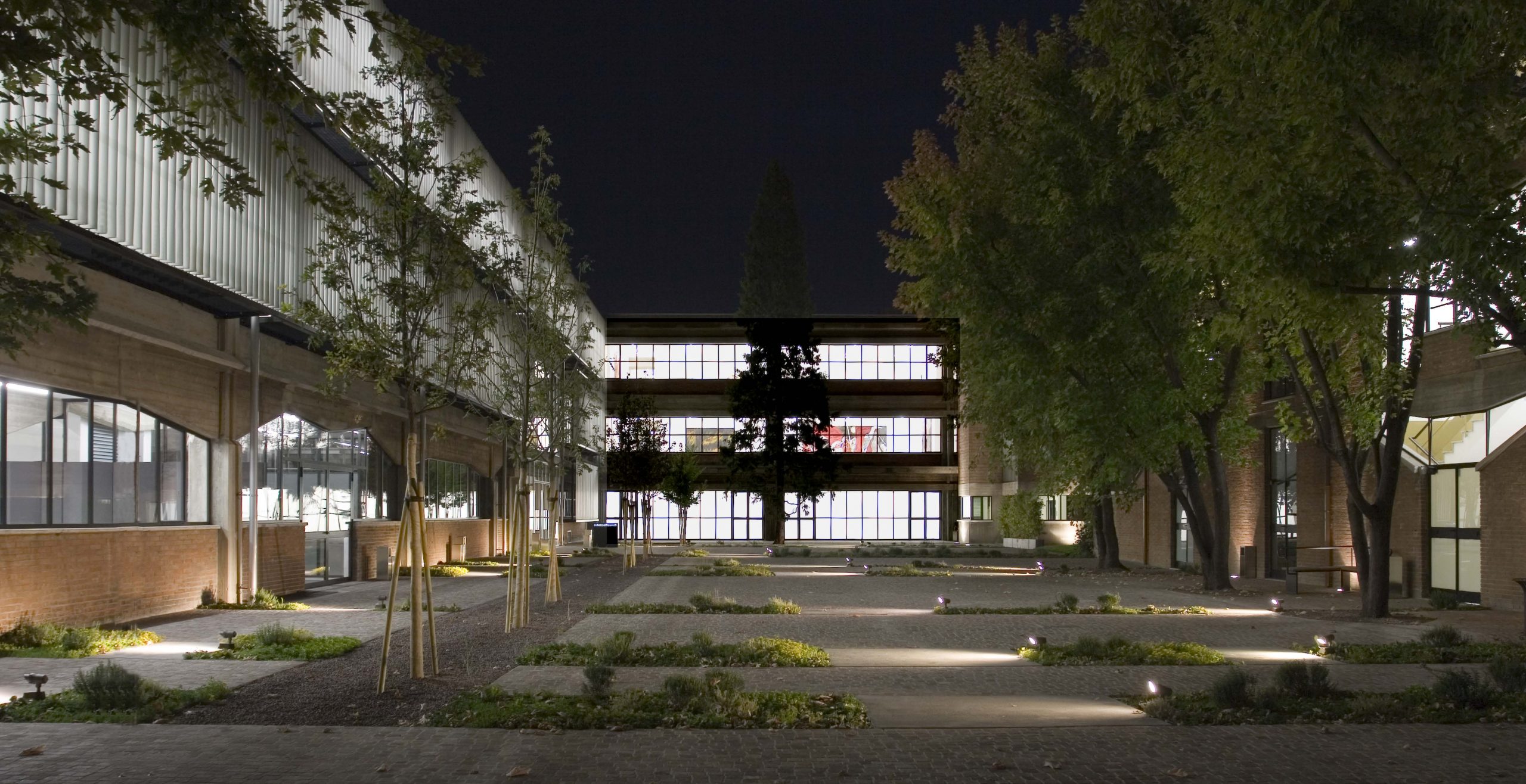
Collezione Maramotti, Cortile interno e spazio progettuale Pattern Room–veduta notturna / Courtyard and project space Pattern Room–by night. Ph. C. Cesare Di Liborio
5.Have you learnt something from this crisis?
Definitely, I think it revealed clear evidence of how strongly we are connected, how much our behaviours and actions effect others and our environment. We are interdependent, this is something we should be always aware of, and also something that is very exciting in terms of original fruitful cooperations.
6.How has the current situation impacted how you work – both in the method and ideologically?
Remote work implies a good coordination and a marked self-management at the same time. On a practical side, as staff, we had the chance to focus on many archive activities which we could not arrange in a standard working flux, to improve our digital resources, to continue working on book productions, daily tasks… Ideologically, I think that this situation disclosed an even stronger perception of the importance of a group acting together, from a small working team to a living humankind.

Svenja Deininger, ‘Two Thoughts’, Exhibition view, Collezione Maramotti, 2020. Ph. Andrea Rossetti
7.Do you see any silver linings?
I hope that this crisis will return us to the world as better kinds of human beings, more cooperative, more aware and respectful. In this period I’ve been in touch with many artists we’ve been collaborating with, not necessarily for working reasons, and I understood better how important it is to be together, to be part of a living artistic interconnected network. We already knew that, but maybe more in a subconscious way. This unexpected form of reality woke us up. Our need to exchange thoughts, ideas, visions has become even stronger.
8.Can you talk about the disruptions caused by the pandemic? Has any of the shows been disrupted by the Covid-pandemic?
We haven’t cancelled any of our planned projects, but of course we were forced to re-plan all of them. We will also reschedule the timing of the current edition of the Max Mara Art Prize for Women, a biannual prize in collaboration with the Whitechapel Gallery. London-based winner Emma Talbot was supposed to be on her 6-month residency in Italy from April to September 2020, but it’s likely she will reach Rome, Reggio Emilia and Sicily next year, to develop her project on articulating and questioning deeply rooted positions of power, governance, attitudes to nature and representations of women.
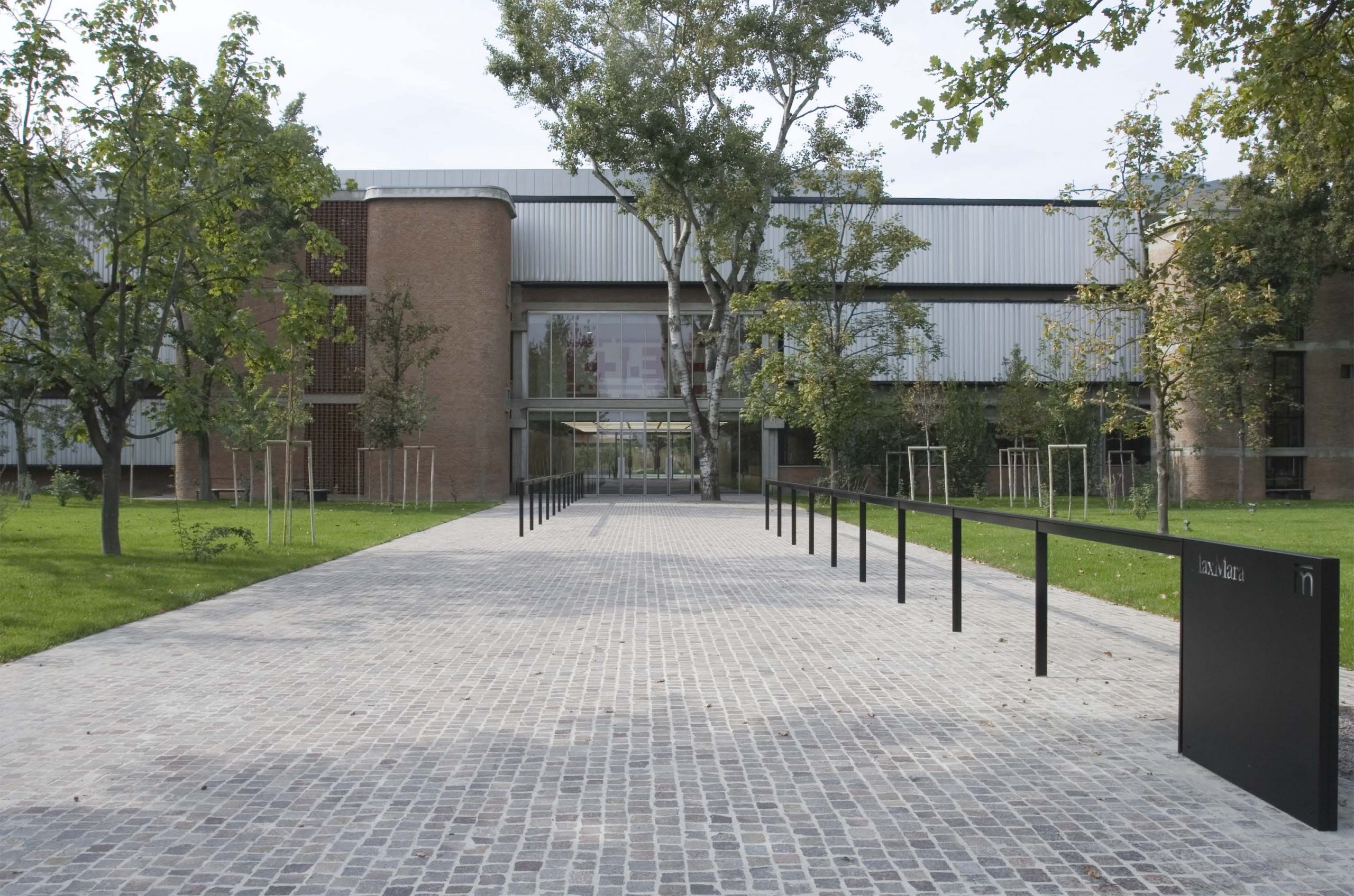
Collezione Maramotti, Ingresso lato Est / East entrance. Ph. C. Cesare Di Liborio
9.What’s on your reading list and what book made the greatest impact on you?
Speaking about this lockdown phase: “Staying With the Trouble. Making Kin in the Chthulucene” by Donna Haraway; a beautiful catalogue about Giuseppe Maria Crespi, an Italian painter from late 17th-early 18th century; “Né obbedire né comandare. Lessico libertario [Not obey nor command. Libertarian lexicon], by Francesco Codello. But I am also reading several graphic novels.
10.Favourite quarantine Instagram accounts?
@tomsachs (artist)
@kristofkintera (artist)
@therainbow_is_underestimated (artist)
@emma.hart_ (artist)
@atpdiary (art website)
@marcello_maloberti_studio (artist)
@aterballetto (dance company)
@Edicola_518 (art kiosk and bookshop)
Categories
Tags
- 10 questions from isolation
- ART
- art prize
- art resources
- collection
- collezione maramotti
- Contemporary
- contemporary art
- covid
- COVID 19
- COVID- pandemic
- COVID-19 crisis
- creatives keep creating
- creativity
- exhibition
- food
- food art
- interview
- Irene Machetti
- irene machetti interviews
- Italian art
- Max Mara
- max mara art prize
- pandemic
- private collection
- quarantine
- Sara Piccinini
- youtube art

